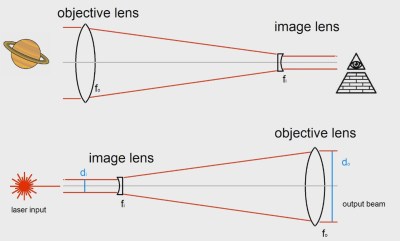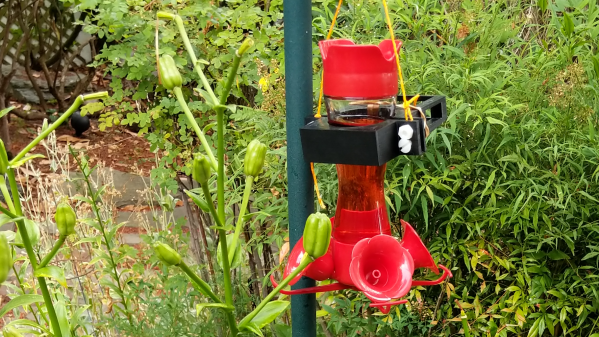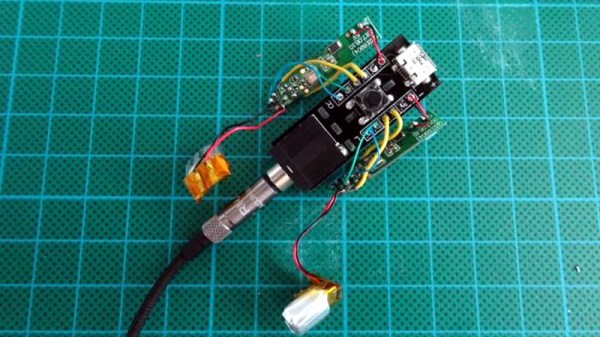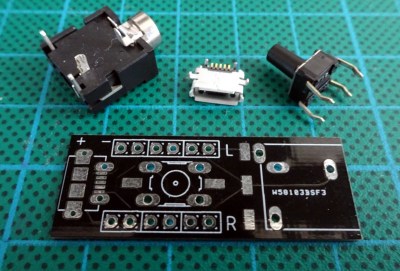Here’s a DIY laser rifle which can explode a balloon at around 150 feet (45 meters) as well as some angry chemicals at a similar distance. Since there are plenty of videos of lasers doing that at around a meter, why shouldn’t doing so farther away be easy? Despite what many expect, laser beams don’t remain as straight lines forever. All light diverges over a distance. This makes it hard to create a laser which can do damage from more than around a meter and is why most demonstrations on YouTube are that distance or less.
 [Styropyro’s] handheld, DIY laser rifle, or Laser Telescope Blaster as he calls it, works for long distances. His solution lies in some surprising physics: the larger the diameter of the beam, the more slowly it will diverge. So he used the opposite of a Galilean telescope to take the small beam of his 405-nanometer laser and increase its diameter. His best result was to explode a balloon at 150 feet (45 meters).
[Styropyro’s] handheld, DIY laser rifle, or Laser Telescope Blaster as he calls it, works for long distances. His solution lies in some surprising physics: the larger the diameter of the beam, the more slowly it will diverge. So he used the opposite of a Galilean telescope to take the small beam of his 405-nanometer laser and increase its diameter. His best result was to explode a balloon at 150 feet (45 meters).
He did run into another issue first though. Anyone who’s tried to keep a camera aimed at a target through a telephoto lens while holding the camera in their hands knows that even a tiny movement will throw the camera off target. For a laser beam to sufficiently heat up the balloon in order to make it explode, the beam has to stay on it for a short period of time. But at a long distance, small movements of his rifle made the beam wander. Putting the rifle on a tripod fixed that. In the video below you can see him work through his design and these issues to finally get his big success.
We can guess what spurred on this interest in long-distance laser rifles. Back in July, a Chinese company made bold claims to building one which could do damage at 800 meters.
Continue reading “DIY Long Distance Laser Telescope Does Some Damage”












 The key to the hardware is the use of a smartcard with proven encryption to store your passwords. Mooltipass is a secure interface between this card and a computer via USB. The new version will be a challenge as it introduces BLE for connectivity with smart phones. To help mitigate security risks, a second microcontroller is added to the existing design to act as a gatekeeper between the secure hardware and the BLE connection.
The key to the hardware is the use of a smartcard with proven encryption to store your passwords. Mooltipass is a secure interface between this card and a computer via USB. The new version will be a challenge as it introduces BLE for connectivity with smart phones. To help mitigate security risks, a second microcontroller is added to the existing design to act as a gatekeeper between the secure hardware and the BLE connection.









